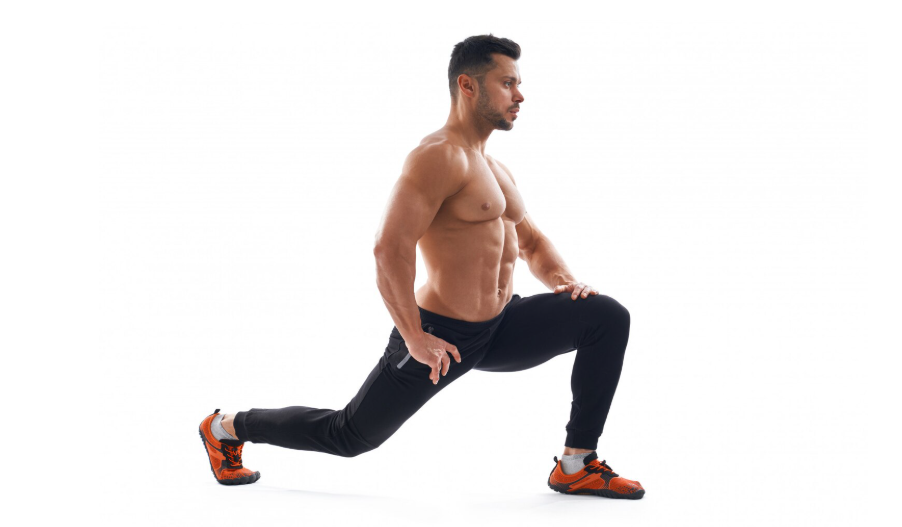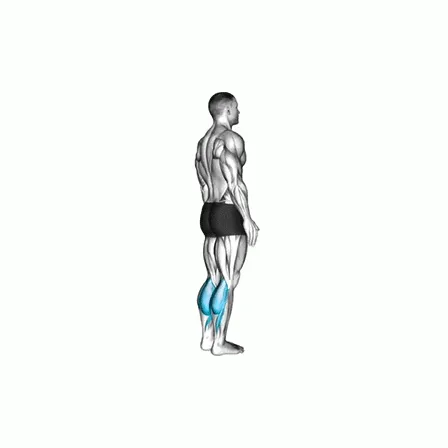Mountain Climbers: Home Cardio for Core Strength
Mountain Climbers Exercise Instructions
-
Start in a High Plank Position
- Place your hands directly under your shoulders with your arms fully extended, and your body forming a straight line from head to heels.
- Keep your feet together, and engage your core to maintain a stable position.
-
Drive One Knee Towards Your Chest
- Bring your right knee towards your chest as far as you can, without lifting your hips or rounding your back. Your toes should lightly touch the floor near your chest.
-
Return to Plank Position
- Quickly return your right leg to the starting position while simultaneously bringing your left knee towards your chest.
-
Alternate Legs Quickly
- Continue alternating legs in a running motion, driving your knees towards your chest at a fast pace. Maintain a steady rhythm, switching legs as if you're "climbing."
-
Keep Core Engaged
- Throughout the movement, keep your core tight, hips low, and body aligned in a straight line.
-
Breathe Steadily
- Inhale and exhale steadily, breathing naturally while maintaining a consistent pace.
Mountain Climbers Exercise Tips
-
Maintain Proper Plank Form
- Keep your body in a solid plank position with your back straight, core engaged, and hips level. Avoid letting your hips sag or rise too high, as this can strain your lower back.
-
Engage Your Core
- This is a full-body exercise, but focusing on engaging your core muscles will help keep your body stable and maximize the abdominal workout.
-
Start Slow if Needed
- If you’re new to mountain climbers, start at a slower pace to master the form. Once you're comfortable, gradually increase your speed while maintaining control.
-
Breathe Properly
- Keep your breathing controlled and consistent. Exhale as you bring each knee towards your chest, and inhale as you return to the plank position.
-
Don’t Overextend Your Knees
- Drive your knees toward your chest, but avoid overextending or twisting your hips. Keep your movements controlled and within a natural range of motion.
-
Avoid Bouncing Hips
- Try not to bounce your hips up and down during the movement. Your torso should remain stable with minimal up-and-down motion, focusing on moving your legs instead.
-
Watch Your Hand Placement
- Keep your hands shoulder-width apart, and ensure they stay firmly planted on the ground throughout the exercise. Avoid placing too much pressure on your wrists by distributing your weight evenly through your palms.
-
Incorporate Variations for Added Challenge
- Cross-Body Mountain Climbers: Bring each knee towards the opposite elbow to target your obliques.
- Slow Mountain Climbers: Slow down the pace to emphasize strength and control, focusing on each contraction as you move.
- Incline Mountain Climbers: Perform mountain climbers with your hands elevated on a bench or step to reduce intensity.
- Plyometric Mountain Climbers: Add a small jump between each knee drive for extra cardio intensity.
-
Focus on Endurance
- Aim to do mountain climbers for time, such as 30-60 seconds, rather than counting reps. This will enhance cardiovascular endurance and burn more calories.
-
Rest if Necessary
- Mountain climbers are a fast-paced, intense exercise, so if you feel your form deteriorating or experience fatigue, take a short break before continuing. Form is key to avoiding injury















